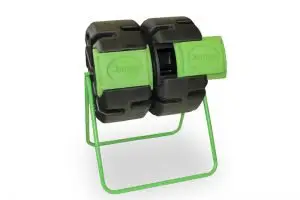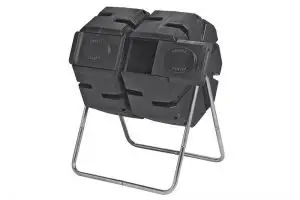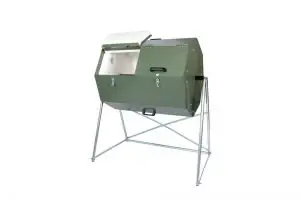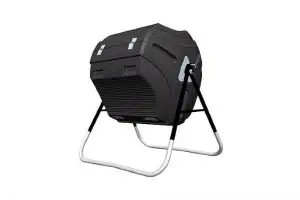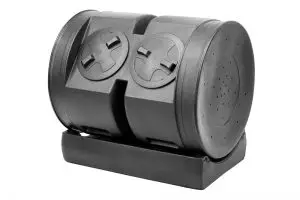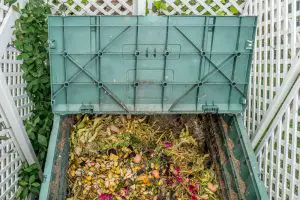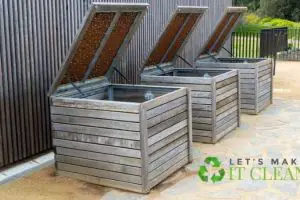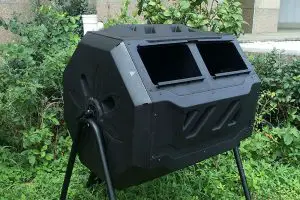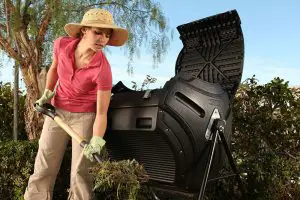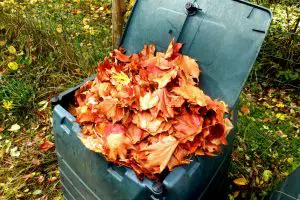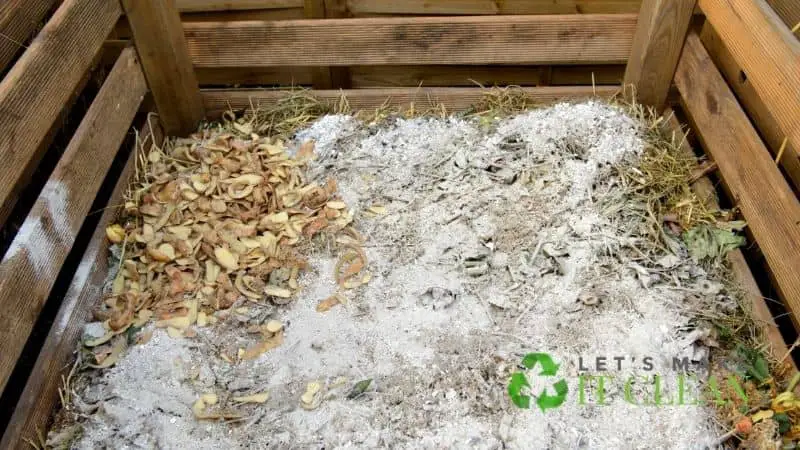There is no specific number of worms that are considered too many in compost. When worms multiply to a specific density according to your bin’s size, their reproduction rate reduces.
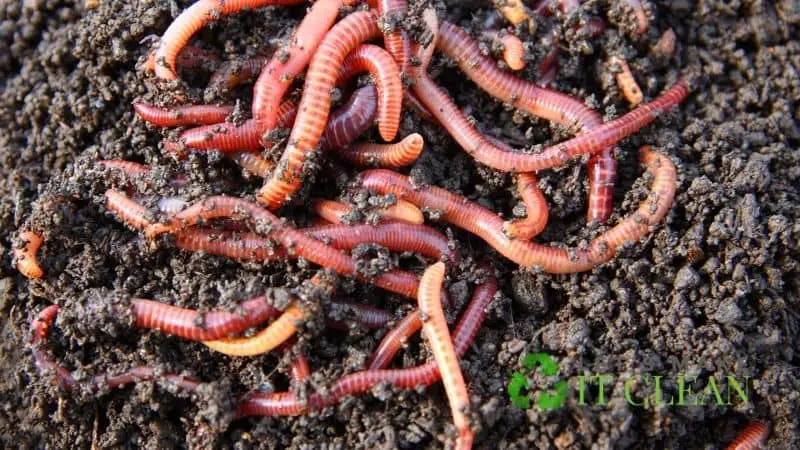
The result is a maintained population level that does not exceed a manageable worm bin population. You can decide to remove an acceptable amount of worms at will and transfer them to your garden.
Quick Navigation
Are you worried about having excess worms in your compost? You don’t need to search for this information anywhere else. This article answers all your questions about the number of worms for vermicomposting.
Some factors determine how many worms you should have and the condition that you should meet. If you feel that you need to remove some worms, what measure do you take when doing the transfer?
Read through this article and get a better understanding.
Can You Have Too Many Worms in Your Garden?
If you are a gardener and come across worm castings in your garden, you ought to be happy. The worm castings are a sign of favorable soil conditions that will promote plant growth.
Finding earthworm castings in your yard, on the other hand, is a cause for alarm. The earthworm castings have the potential to cause damage to a well-maintained lawn. High nutrition levels from the excess earthworm castings will be harmful to the grass you are growing in the garden.
An overabundance of fertilizer from the excess castings in your garden begins burning the plants you have planted. If you notice decay or plant growth failure in the garden, it will help if you begin pest control practices.
How Many Worms Do I Need for My Bin?
The amount of worms you will have depends on your approach. Homeowners with more significant worm bins require more wigglers than those who have smaller vermicomposters.
Similarly, having more food waste demands that you have more wigglers. The wigglers will facilitate a faster-composting process when they are enough in the worm bin.
Factors That Determine the Number of Worms in Your Worm Bin
Size of the Worm Bin
Red wiggler worms are in pounds available in most worm farms, meaning you can conveniently purchase the number you desire. For every square foot surface area of your composting bin, add one pound of wigglers.
If you have created a suitable environment for your wigglers, they reproduce faster. This rapid reproduction consequently increases the population in your bin. Adding wigglers to this favorable environment demands that one has to have the reproduction rate in mind.
Also, make sure you have a backup worm bin to transplant the wigglers into instead of a worm farm to avoid overpopulation.
Feed your worms with more foodstuffs to meet their food demand for better performance. The feeding intervals must be steady to create an environment that supports reproduction.
Avoid having a more significant number of wigglers in bins if you don’t have enough food supply to sustain them.
Quantity of Food Waste
Homeowners who regularly produce more kitchen waste and wood waste require more wigglers. If someone has less organic materials for composting, they should keep the worm amount on the lower end.
Red wigglers have the potential to eat food that is about half their weight per day. That feeding rate means that every five pounds of wigglers in your bin, add two and a half pounds of food scraps every day.
How Do You Get the Worms Out of Your Compost?
Whenever you desire to remove the worms, look for a plastic sheet or paper. Empty your pile onto the sheet. Shape a few cone-shaped piles from the whole heap.
From each of these piles, be prepared to come across:
- Undecomposed bedding materials
- Baby worms
- Adult worms
- Finished compost
- Undecomposed food scraps.
Now expose your bin’s content to the sun, which will raise the temperature in the pile. Worms will migrate to the lower part of your pile, leaving you with worm-free piles. The next step will be removing the pile’s top layer as you separate the finished comfort from the undecomposed materials.
Once you have removed the top layer, allow the remaining pile to rest in the sun for about three minutes. The heat will force any worm to move to the bottom of the now exposed pile. Remove the next layer and continue with the process until every worm is at the pile’s lower part.
You can now collect the worms and transfer them back to your vermicomposter.
What Kind of Foods Can Worms Eat?
A vermicomposting bin with a healthy diet for worms yields more compost due to the optimum conditions.
Feeding worms with small pieces of kitchen wastes for faster composting. Small amounts will break down at a rapid speed. This will reduce odors and keep pests away from your pile.
The kind of food you want to give to your worms include fruit and vegetable scraps that are not acidic. Whenever you come across grains and bread, add them to the bin.
Coffee grounds, eggshells, and tea bags that remain after breakfast are also nutritious ingredients for feeding your compost worms.

Whenever you trim the grass from your yard, collect the grass clippings, and feed them to your wiggler worms. Mix the shredded paper from your office with cardboard pieces and add them to your bins.
If you add processed foods and yogurt to your vermicomposter, you risk spoiling the whole bin. Meat scraps, food spices, and spicy foods are also not suitable for feeding your worms. Avoid fruit waste such as pineapples, tomatoes, and bushels, which bring foul smells when they begin decomposing.
Why Worms Try to Crawl Way From the Compost Bin
Most people fail to embrace the info when vermicomposting is providing optimum living conditions in the worm bin.
You cannot compost in a vermicomposter without settled worms. If your red wigglers try to escape from your bin, you need to rethink your composting strategies.
Fixing this worm escape problem requires you to figure out the worm population trying to escape. If you have just a small amount of worms trying to escape, you don’t need to worry.
If, on the other hand, you find that the amount of escaping worms is more significant, consider the following key points:
How Wet Is Your Compost Bin?
Worms drown when moisture levels are too high. To test the moisture level in your bin, use a moisture meter. Alternatively, you can pick a handful of bedding materials from the pile and squeeze it. Whenever liquid drips from the bedding material, you need to reduce the water.
To reduce the water in the bedding materials, add some fresh materials such as newspapers that will absorb the water. Avoid adding fresh kitchen scraps that will add water to the bedding materials.
More liquid demands that you start the composting process afresh after you empty the bin’s content. Use red wigglers from the previous content and new content from your home waste instead of getting wigglers from a worm farm.
Are You Using the Correct Composting Material?
Some materials irritate the red wigglers when added to your bins. If you must use white paper, make sure you use it in small amounts. You should also mix the white paper with shredded newspaper and corrugated cardboard that has also been shredded.
Commercial potting soil may also contain salt. This salt irritates your composting worms, reducing their effectiveness in composting. Instead of buying some potting soil, use compost or peat moss to make the bedding.
What Fresh Materials Have You Added?
Adding fresh matter to your vermicompost systems demands that you be careful to avoid using contaminated or unsafe materials. You may add materials that irritate the worms, making them try to escape immediately.
Whenever this happens, remove the most recent content and observe the behavior of your worms.
How Dark Is Your Bin?
If you have few worms, it will help if you position the vermicompost bin in an environment with sufficient lighting. The worms that were dying will be inconvenienced by the bright light and migrate back to the bottom of your compost pile.
Conclusion
Hopefully, this article has answered all your questions regarding the number of worms to have in a vermicomposter.
Ensure you use this article’s information to create an environment that helps you reap maximum benefits from the worm farm and worms.
Avoid kitchen scraps that irritate the worms and food organic matter that raises liquid levels dangerously in the compost bins.

